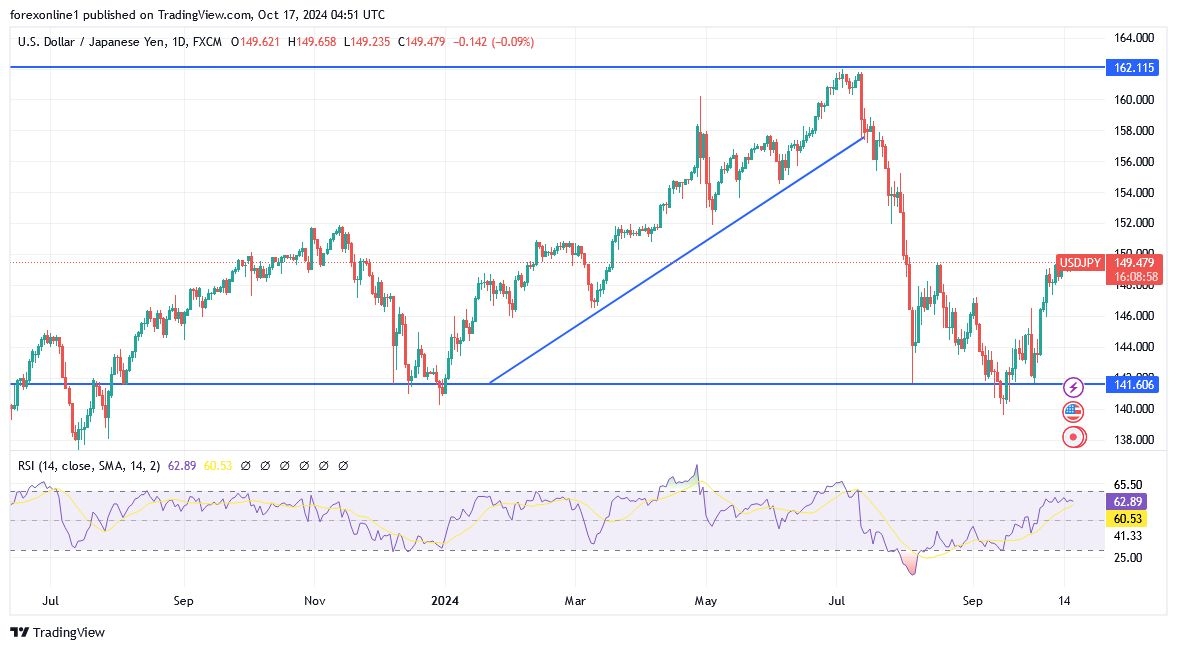- The Japanese yen rose to around 149.3 against the US dollar on Thursday, but remained close to an 11-week low as investors reacted to disappointing trade figures.
- The data showed that Japan’s trade balance swung to a deficit in September as exports unexpectedly fell, while import growth slowed.
- On the monetary policy front, Bank of Japan board member Seiji Adachi said earlier this week that conditions were already in place to normalize monetary settings, but stressed that the BOJ should raise interest rates at a “very moderate” pace.
- Also, he warned that the BOJ should avoid a radical change in policy given the uncertainty over the global economic outlook and domestic wage growth.

Externally, the Japanese yen continues to face pressure from a stronger US dollar on bets that the Federal Reserve will be less aggressive in cutting US interest rates. The so-called Trump trade also lifted the dollar as his policies are seen as inflationary, which would prevent the Federal Reserve from cutting interest rates further.
Top Forex Brokers
In Asian markets, Chinese stocks experienced early volatility and dipped as investor impatience grew over the pace of stimulus measures by the central government. The CSI 300 index, which tracks the largest listed companies in Shanghai and Shenzhen, fell 0.2% by midday after initially declining by 1.3% during morning trading. This latest decline represents a total drop of more than 10% since reaching its peak on October 8. Meanwhile, Hong Kong-listed Chinese stocks managed a modest recovery, with the Hang Seng index rising 0.7%.
The volatile market driven by stimulus optimism fades
The recent market volatility highlights the volatility in Chinese stocks since late September, when a wave of stimulus measures by the central bank briefly sparked optimism among investors. But this initial enthusiasm has now quickly faded as Beijing has yet to provide further details on fiscal spending plans. Moreover, this uncertainty fuels doubts about whether the Chinese authorities are ready to roll out more aggressive measures to stabilize the economy and support stock markets.
"Given how quickly markets have risen, they can fall just as fast. But the overall policy measures are moving in the right direction, and when things calm down, Chinese stocks may still trade in a higher range than before." Although a 10% decline may typically indicate a technical correction for the CSI 300 index, the recent extreme volatility in Chinese markets has diminished the significance of such landmarks. After rising more than 30% over three weeks from mid-September, the index has now lost its momentum, reflecting mixed investor sentiment about whether the rally has peaked or if more gains are still possible.
USD/JPY Technical analysis and Expectations Today:
Bulls are still watching the possibility of USD/JPY breaking the psychological resistance level of 150.00 to confirm control and thus prepare for stronger upward breaches. Technically, any positive reaction to the announcement of US retail sales figures and the number of weekly jobless claims today will bring bulls more momentum to move towards the resistance levels of 150.70 and 151.40 respectively, which are levels that strengthen the uptrend. On the other hand, and in the same time frame, there will be no break of the uptrend without returning to the support level of 145.90. The currency pair will remain subject to signals from central bank officials regarding the path of tightening, in addition to the extent of investors’ risk appetite or not.
Ready to trade our Forex daily forecast? We’ve shortlisted the best FX trading platform in the industry for you.
